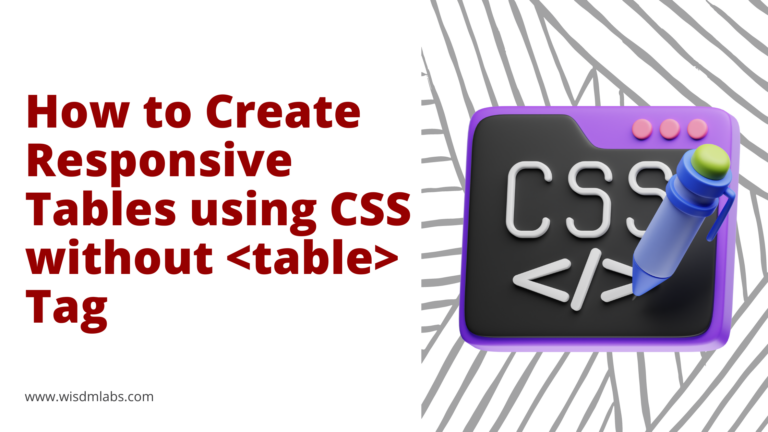This is a guest post by Helen Colman. If you’d like to contribute to our blog, feel free to get in touch with us.
Are you new to the instructional design scene and feeling a little nervous about creating your first eLearning course? Are you looking for an instructional design tool that will make the process less daunting? Well, then you’ve come to the right place.
Whether you’re a novice or seasoned instructional designer (ID), you need specialized software to build engaging and compelling courses. Fortunately, there’s a gamut of tools out there; however, finding the right one that meets your needs might not be that easy.
In this article, we’ve compiled a list of the most important factors to consider when choosing software for creating online courses, but before we get there, let’s see what kinds of ID tools you might need.
Types of Instructional Design Tools
ID software is just about authoring, isn’t it? Of course not; there are various kinds of tools built to streamline different stages of instructional design, from planning to content creation and delivery. Let’s look at what types of software you need to support the different phases of the ID process.
Design and planning
Many tools can save you a lot of time and effort at the initial design and planning stage. This is what they include:
Training request tools
These are online form building tools that you can use to create a training request form. It will help you easily collect the information that is crucial for developing a course (course subject, course description, targeted audience, the purpose of the training, etc.) from your stakeholders and understand what direction to go.
Potential vendors: Google Forms, Microsoft Forms, Typeform
Collaboration tools
These tools will help you smooth out the collaborative processes with your training team. They include mind mapping tools, visualization and prototyping platforms, and file-sharing apps.
Potential vendors: MindMeister, InVision, G Suite
Project management software
These apps can help keep you on track with deadlines and aligned with your goals.
Potential vendors: Trello, Asana, Wrike
Authoring and content creation
When referring to eLearning content, most people are talking about online courses. However, this is not limited to e-courses, but can also include video tutorials, assessments, simulations, infographics, and more. Here are the tools you may need to create different kinds of learning materials:
Course authoring tools
eLearning authoring tools are the most important ones for every instructional designer to have in their arsenal. They are designed specifically to create engaging interactive courses from scratch or turn existing training materials into eLearning courses. Some software solutions are used for specific tasks like building quizzes, however, most of them are a set of tools under one roof that allows instructional designers to cover all their needs. For example, with the iSpring Suite authoring toolkit, you can build slide-based courses as well as quizzes, video lectures, dialogue
simulations, and short interactive modules.
Potential vendors: iSpring Suite, Adobe Captivate, Articulate 360
Graphic tools
Sometimes you need to develop custom graphics or infographics for your eLearning course. In this case, an authoring tool may not be the best option. Here you can use professional graphic editors or simple apps that let you create your graphics quickly and easily, even if you have little to no graphic design skills.
Potential vendors: Photoshop, Canva, Infogram
Videomakers
Some eLearning authoring solutions, like iSpring Suite, already include video recording and editing tools. However, you can use some standalone video makers instead to create screencasts or record video lectures.
Potential vendors: Camtasia, Vimeo, Vyond
Delivery
When it comes to delivering your eLearning courses, a learning management system (LMS) is a key piece of technology. This is an online platform where you can upload your courses and assign them to learners. An LMS allows you to automate the most tedious tasks, such as grading, processing statistics, and creating reports.
Potential vendors: iSpring Learn LMS, Moodle, Blackboard
9 Factors to Consider When Choosing an ID Tool
Now that you know what kind of tools can benefit you as an instructional designer, let’s focus on the ID’s main paraphernalia – an eLearning authoring tool – and see how to choose the right one for you. Here are the 9 crucial factors to consider when selecting a course creation tool.
1. Content type
The first thing you need to do is define your learners’ training needs and set the appropriate instructional strategy to meet these needs. Think of what types of training content can be most useful in your case: video lessons, quizzes, software simulations, quizzes, or all of these? It will help you understand what capabilities the authoring tool that you choose should have.
2. Interactivity
Developing and designing a high-quality course is not enough, unless it engages and motivates the audience to learn. One proven way to make an eLearning course engaging and inspiring is to make it interactive. So, choose an authoring tool that allows you to create interactive content like quizzes, drag-and-drop activities, and simulations with branching scenarios and doesn’t require any programming expertise.
3. Assessments
Evaluating how learners understand the material is crucial in the training process. Assessments help to identify areas for improvement and ensure that the learning content meets training needs. When choosing your ID software, check to see if it allows you to create a variety of question types (not only typical true/false and multiple-choice questions, but also fill-in-the-blank, hotspot, drag-and-drop, and more). It’s also important that a tool is capable of providing
feedback messages to learners and allows you to set up testing rules according to your needs.
4. Mobile-friendliness
Mobile learning is one of the easiest and most engaging ways to deliver eLearning content. It makes it possible for learners to study anytime and anywhere from their personal smartphones and tablets. That’s why eLearning courses should be 100% mobile compatible. But although most authoring tools enable you to create responsive content, some of them require creating various versions for desktop, tablet, and smartphone, which is quite time-consuming. Pick a tool that will let you build adaptive courses that will play perfectly on any device, with no manual tweaking required.
5. Asset library
Another resource that will help you save a great deal of time is a library of ready-made assets that comes with the authoring tool. By using ready-to-go course templates, characters, backgrounds, and icons, you can build eLearning courses literally in a matter of minutes. So, if you’re a novice designer or very short on time, choose a software with a built-in asset library.
6. SCORM compliance
If you’re going to deliver your courses via an LMS and receive reports on how your learners view the materials and what results they get, the content should be published with certain standards that the LMS recognizes. The standard used most often, and supported by almost all modern learning platforms, is SCORM. If your LMS is SCORM-compatible, choose an authoring tool that allows you to publish courses to SCORM.
7. Pricing
Ask yourself or your manager (if you work for an organization) how much money you’re ready to invest in an authoring tool, but keep in mind that price should not be the main factor to take into consideration. Sometimes, a very low price for an ID tool could be a red flag for hidden fees for necessary functions.
8. Localization and translation
This aspect is worth considering if you need to train employees from different countries and make your eLearning courses accessible in multiple languages. Some authoring tools have powerful localization and translation capabilities that allow instructional designers to replicate courses across different languages and do so quickly and cost-effectively.
9. Technical support
The level of tech support may differ depending on your plan. However, it is bad if it’s missing altogether. Before purchasing software, find out how to reach the vendor if something goes wrong with the tool. Should you write an email, use a live chat, or call if the issue is urgent? The more options offered, the better.
To Sum Up
Now you know the main factors you need to think about when selecting an instructional design tool. We hope this will help you make an informed choice so you can create engaging professional-looking courses quickly and easily, and enjoy the development process.
Author Bio
Helen Colman is an editor and content strategist at iSpring. She enjoys combining in-depth research with expert knowledge of the eLearning industry.










